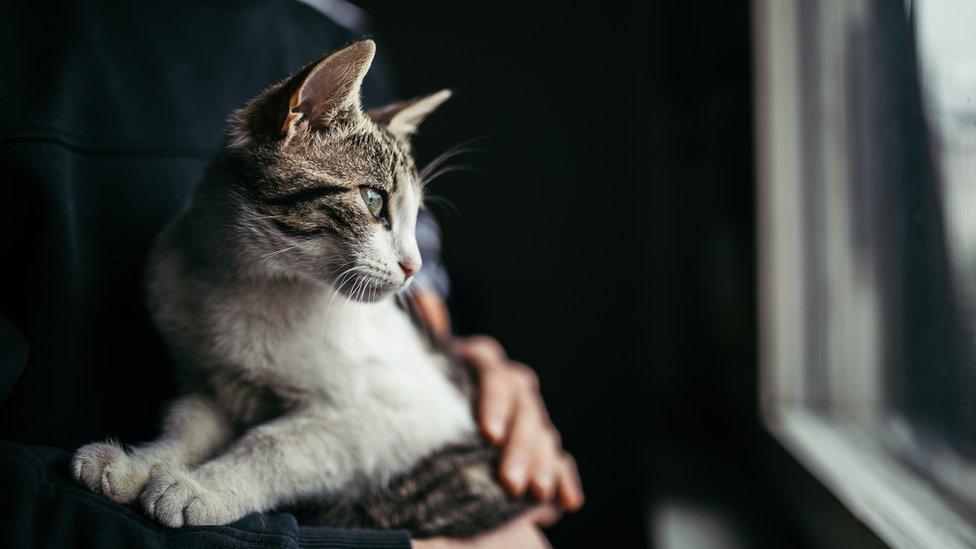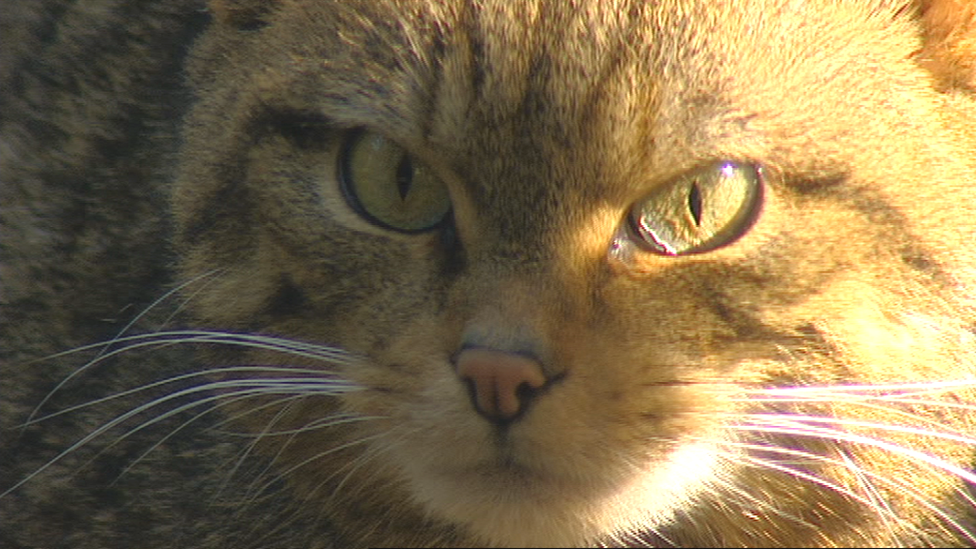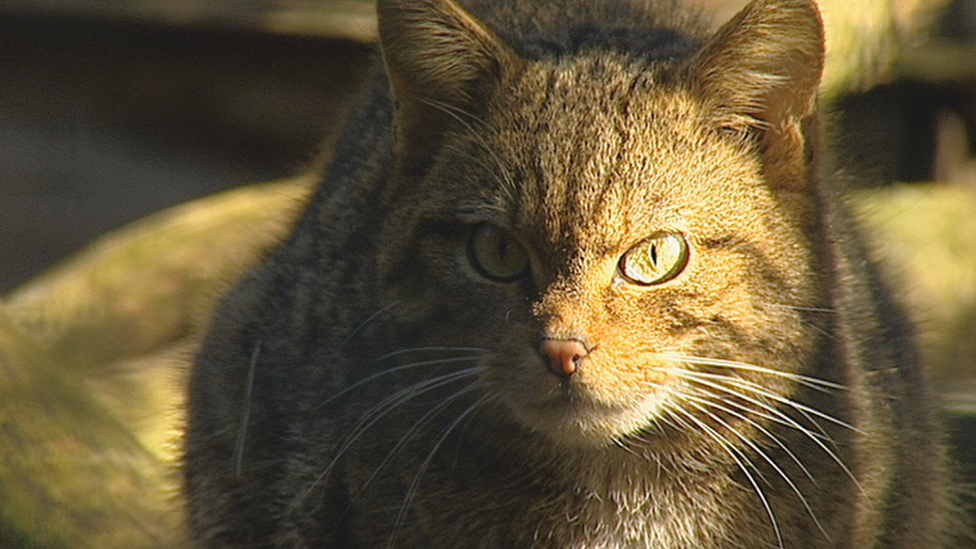Pet ownership 'key to Scottish wildcat survival'
- Published

Breeding with domestic cats has been indentified as a major threat to Scotland's genetically-pure wildcats
How pet and feral cats are managed forms a key part of a project's efforts to save the Scottish wildcat.
Breeding with domestic cats is a major threat to the survival of Scotland's genetically-pure wildcats.
Their numbers are now so low that new research has concluded there is "no longer a viable wildcat population living wild in Scotland".
Scottish Wildcat Action (SWA) suggested holding a "national conversation" on responsible cat ownership.
It has also suggested captive breeding of pure wildcats at National Wildlife Reintroduction Centre in the Cairngorms and releasing them into the wild.
The International Union for the Conservation of Nature (IUCN), which was commissioned by SWA to review Scotland's wildcat conservation efforts, said hybridisation was the major threat to the animals' survival.
It is thought hybridisation began to affect Scottish wildcats severely between the 1950s and 1980s.
'Perfect environment'
SWA, a group whose members include Scottish Natural Heritage (SNH) and Royal Zoological Society of Scotland (RZSS), said managing domestic cats was important to its conservation efforts.
Eileen Stuart, head of policy and advice at SNH, said: "The public will have an important role in helping minimise future hybridisation.
"Responsible cat ownership - including microchipping, neutering and vaccinations - is one way we can help reduce the devastating effects on wildcats."

Numbers of Scottish wildcats have been in decline for years
David Barclay, cat conservation project officer at RZSS, said helping the Scottish wildcat population to recover would be challenging.
He said: "Our plans for a National Wildlife Reintroduction Centre will provide the perfect environment for breeding genetically tested wildcats with the aim of releasing them back into the wild to re-establish viable populations in key locations.
"Combined with the continued development of the conservation breeding programme, this will ensure we have a long-term solution for the recovery and conservation of this iconic species."
'Iconic species'
Mr Barclay added: "Together we can restore Scotland's wildcats to their rightful place as an integral link in a thriving ecosystem."
The centre would be based at RZSS' Highland Wildlife Park near Kincraig.

A national conversation on responsible cat ownership has been suggested
Environment Secretary Roseanna Cunningham said the IUCN's review presented further evidence of the "serious challenges" that wildcat conservation faces in Scotland.
She said: "The wildcat is an iconic Scottish species and, as such, I will consider every possible action the Scottish government can take to save it, including an increased focus on captive breeding and reinforcement of the Scottish population with wildcats from elsewhere.
"We have in place a partnership of scientists and specialists with the knowledge and expertise to give us the best chance of restoring the 'Highland tiger' as a distinctive and charismatic species in the Scottish countryside, and I look forward to working with them to make this a reality."
SWA's work is separate from the Wildcat Haven project which involves establishing reserves in areas where wildcats are found and also neutering and vaccinating pet cats.
- Published20 December 2018
